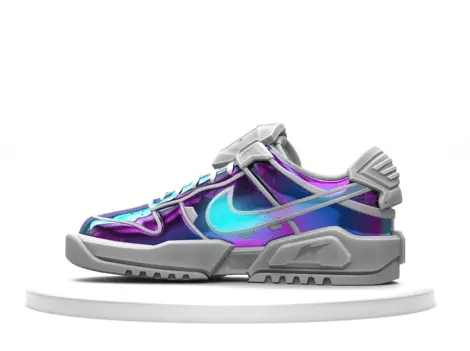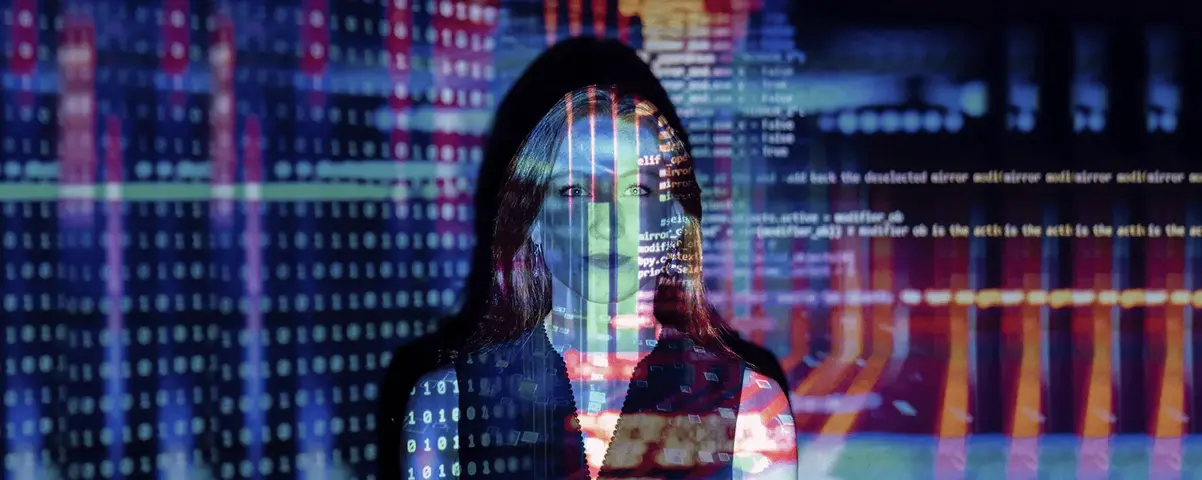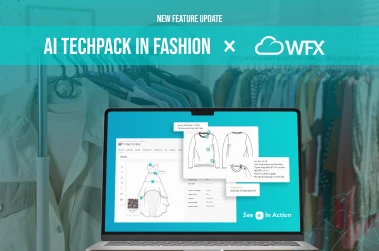Now that we have answered the burning question of WHY would you want to decentralize the internet; and how Web3 is different from the Internet of today. Let’s discuss why the fashion industry is interested in Web3 and how it is taking advantage of this new technology.
1. Supply Chain Traceability & Sustainability
So far, we’ve talked about how Web 3.0 is great for regular people. But what about fashion companies? How do they benefit from a decentralized system with open protocols? Turns out, one of the technologies that powers Web 3 (aka blockchain) has massive implications for the fashion industry.
The fashion supply chain is highly fragmented and complex in nature, as brands and suppliers need to share and coordinate a lot of data with each other. But this fragmentation often leads to distrust in data followed by inconsistent, incomplete and delayed information sharing. But by recording supply chain data in an open-sourced centralized ledger, fashion brands can effectively track information to its original source easily.
Since transactions on the blockchain can’t be altered, deleted or forged, fashion brands can also use it as irrefutable proof for their claims of ethical sourcing, production and sustainability. This will help improve customer trust, loyalty and brand image.
Brands can use blockchain to better vet any 3rd party suppliers and root out the bad apples with unethical labor and production practices. It will also help them identify and fix supply chain bottlenecks and points of wastage much faster.
Read more: How blockchain can make fashion supply chains more transparent
2. Rise of Independent Designers
Web3 is giving rise to a true creator-centered economy by democratizing the digital fashion industry. Pretty much anyone can become an independent designer and start a digital label. In fact, many independent designers and labels are making millions designing virtual clothes, skins and accessories for Web3 games like Guild of Guardians, Skyweaver as well as regular gaming platforms like Roblox and Fortnite.
With 3 billion gamers in the world, as of 2022, digital fashion products have opened up a whole new market and a demographic for fashion brands, designers and creators. Independent designers can charge anywhere from $20 to $200 for their designer. It’s a lucrative business with a low barrier to entry, unlike traditional fashion retail where you need manufacturers, suppliers, patternmakers and a whole lot of capital to start your own brand.
Samuel Jordan, Mishi McDuff, Xinyue Li, Republique, The Fabricant, Auroboros, and DressX are some of the biggest names in the digital fashion space right now. They not only design their own collections for Web3 platforms but are also helping traditional fashion houses like Balenciaga, Gucci, Louis Vuitton, Stella McCartney, Ralph Lauren, Burberry, Coach, Adidas, Nike, Bulgari and many others enter Web 3.0.
3. Solve Authentication Problems
Authentication is one of the most important functions of the fashion resale market. It is also the most secretive and difficult part of the industry. And for good reason—luxury brands lose an estimated $100 billion every year due to counterfeiting (as per OECD’s 2021 Global Counterfeiting Report). That’s just the monetary impact, sophisticated counterfeiting erodes consumer trust, brand image and has legal consequences that are harder to quantify.
This is where another key Web3 technology aka NFTs (Non-Fungible Tokens) can be the fashion industry’s saving grace. NFTs are a great way to record the purchase and manufacturing history of products. This will help distinguish between fake and original products since there is no way to falsify data. With NFTs, information is verified by a peer-to-peer network. This means there is no need to rely on or pay centralized organizations or third parties such as authenticators for verification.
Read more: What you need to know about Supply Chain Management in Apparel Industry
4. Customization and Personalization
One of the things that makes digital fashion in the Web 3.0 world really special is that it can be customized and personalized more than physical clothes. Web 3.0 digital fashion brands like The Fabricant use 3D Software to “fit” the garment to the user’s photo or digital avatar. This kind of customization gives digital clothes a more natural and seamless look. Although there is still a long way to go for digital clothing to look better than real clothes, digital design is catching up very quickly!
The Fabricant has also launched a new online design studio where users can create and trade their own virtual clothes as NFTs. The digital fashion house says that the studio is enabling “anyone to become a digital fashion designer.” Users can wear these personalized outfits or ‘looks’ in the Metaverse or trade them if they want. This is a great example of how fashion brands can use Web3 to create a loyal community through personalized experiences.
In fact, Gucci even bought virtual land on the decentralized platform The Sandbox. But why? Well, Gucci plans to build a concept store called Gucci Vault which will provide more interactive and personalized experiences to its ‘fans’ in the digital world. And from the looks of it, it’s making Gucci even more popular among Gen-Z, a key demographic whose disposable income has reached an estimated $360 billion and will only keep on increasing as they grow up.
5. Rethinking Ownership and Intellectual Property Rights

NFTs are the best option for verifying ownership of assets. Brands like Nike and Jacob & Co. are selling physical products that are connected to NFTs, which can be used to verify the item’s authenticity and ownership. No matter how many hands the product passes through, its ownership can always be traced through its blockchain records. This will significantly reduce sales on the black market and the counterfeiting of luxury goods.
However, when you buy an NFT by itself and not as part of a bundle, it can make people question what they are actually paying for. What does it mean to own an NFT if you don’t have some sort of physical property? This is where we must distinguish between ownership and intellectual property rights.
Ownership of a digital asset means that you have the right to use it however you want. You can make exclusive merchandise of your digital asset and sell it; you can use it for marketing and advertisements; you can resell it for a profit, etc. But, the original creator is entitled to royalty payments because they own the copyright. To get a better understanding, you can see it as how music artists may receive royalties for reproduction of their work but the ‘masters’ of those songs are technically owned by the music labels.
Even if you resell your digital asset, the original designer makes a percentage of the profit since they have copyright. In a way, intellectual property rights are a recurring profit for the designer since no matter how many times their “art” gets sold, they always receive a percentage of the profit.
Read more: The evolution of the showroom – how technology is transforming B2B sales
6. Use of Defi (Decentralized Finance) In The Fashion Industry
A subsector of Web 3.0, DeFi is an umbrella term for blockchain-based financial services. It aims to replace traditional financial institutions such as banks with peer-to-peer networks that can provide banking services, loans and mortgages, asset trading and more. DeFi is faster and doesn’t require extensive paperwork or involvement of third parties (although regulations may be underway).
For many small to medium companies, DeFi is emerging as an alternative financing source. It is especially beneficial for independent designers, designers from marginalized communities and new fashion brands who might not be granted loans from traditional banks for various reasons.
Using cryptocurrency has its own perks though, brands and designers can transfer funds across the world much faster and cheaper. Not to mention it’s more transparent and is the closest thing to a universal currency. This is one of the many reasons brands like Gucci, Balenciaga, Farfetch, Tag Heuer, Nike, H&M, Off-White, ASOS, and Calvin Klein are already accepting cryptocurrency as payment.
For example, if you want to expand your brand overseas but don’t have a credit score in that country. You can use decentralized finance (DeFi) protocols as a source of funding because there are no borders for DeFi protocols, so you can use it as a source of finance abroad.
DeFi can also be used to make automatic payments such as royalties to designers. You can also use self-executing programs such as smart contracts to automatically execute payments when certain conditions are met, for instance, when the company verifies it has received a shipment.








































